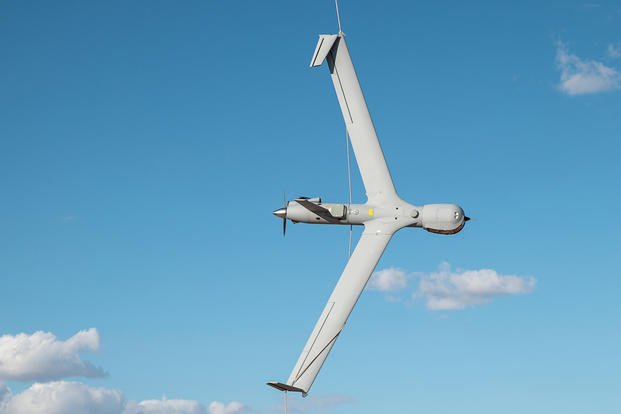DUBAI, United Arab Emirates — Yemen's Houthi rebels claimed they brought down two U.S.-made drones this week over central Marib province, the scene of heavy fighting between the Iran-backed rebels and forces loyal to the internationally recognized government.
The U.S. military said it wasn't aware of any lost drones in the Mideast and added that it did not operate any aircraft above Marib.
On Wednesday, the Houthis' media arm released a video claiming to show the two drones after being shot down. The rebels identified the wreckage as showing ScanEagle drones.
One of the drones appeared less damaged than the other. The video at one point shows a sticker that correctly bears the Commercial and Government Entity, or CAGE, number for Insitu, the Bingen, Washington, company that builds the drone. Insitu is a subsidiary of Boeing Co.
Boeing said the drone wreckage shown did not belong to a ScanEagle, but declined to comment further.
Lt. Col. Karen Roxberry, a U.S. military Central Command spokeswoman, said Wednesday there were “no downed CENTCOM assets” in the region. “We are not flying over Marib,” she said.
The ScanEagle is an unmanned reconnaissance drone made by Boeing that is launched by a catapult, costs over $3 million and can fly for more than 20 hours, according to the U.S. Air Force. Multiple American military services fly the aircraft, as do other countries.
The Saudi-led military coalition fighting on behalf of Yemen's exiled government since 2015 isn't immediately known to fly the drone, though there are many copycat systems like it.
Other drones operating in the region include the General Atomics MQ-1 Predator.
Since February, the Houthis have sought to capture energy-rich Marib to try to gain full control over northern Yemen. The Saudi-led coalition, government forces and others allied to them have held the area.
Yemen has been convulsed by a civil war since 2014 when the Houthis took control of the capital of Sanaa and much of the northern part of the country. That forced the government of President Abed Rabbo Mansour Hadi to flee to the south, then to Saudi Arabia.
Despite a relentless air campaign and ground fighting, the war has morphed into a regional conflict that has deteriorated into a stalemate, killing some 130,000 people and spawning the world’s worst humanitarian crisis.
The Biden administration had withdrawn its backing for the coalition earlier this year but said the U.S. would continue to offer support to Saudi Arabia as it defends itself against Houthi attacks.











